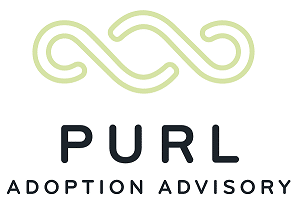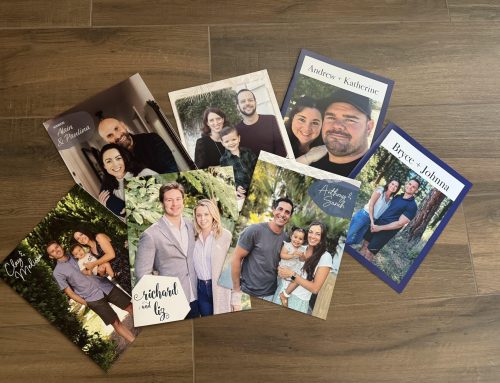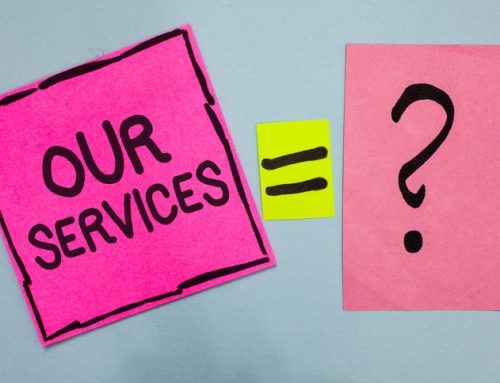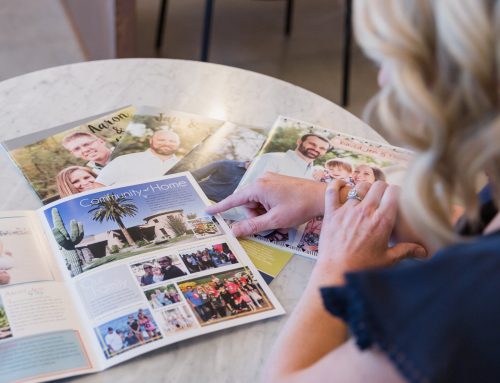
There are different ways to adopt, and deciding which route is right for you BEFORE you start the process is really important. Each of the types below will have different steps in the process, so it is helpful to do a lot of research on adoption generally (particularly the loss inherent in adoption) and talk with different adoption professionals first to determine the best route for you and your family — before you spend any substantial sum of money. Below you will find a brief discussion on each of the different types of adoption (even one that is not a type of “adoption” at all).
Domestic Infant Adoption
This is the type of adoptions we specialize in at at Purl. Typically, this means you are adopting an infant at birth, often after being chosen by or matched with an expectant mother or expectant parents during their pregnancy or right after the birth of the child. Most people who are choosing to adopt a child domestically will do so through a few different methods: 1 ) using a full service adoption agency, 2) using an adoption advisor like Purl to connect with many different adoption professionals, or 3) self-matching with the support of an advisor and adoption attorney or just an adoption attorney. Some people will utilize what is known as an adoption facilitator, but those are illegal in most states, so check your state’s laws before signing up with a facilitator. The average cost of domestic adoption is about $41,000, but can range from as little as $6,000 to as high as $65,000. Generally, the expectant parents placing their child through domestic infant adoption are in some type of crisis and are unable to parent their child due to that crisis. Follow along with many voices in the adoption triad to learn more about how you can be prepared for what this crisis may look like, and what impact the crisis and the adoption may have on the child.
A little more on each of these methodologies for domestic infant adoption, discussed below:
Domestic Adoption Agencies: Historically, adoption agencies have been full service organizations where you spend large upfront sums of money to start the process, locking you into working with them for your adoption. They have historically provided everything you need to complete your adoption: the home study, adoption education and preparation, preparation of your adoption profile, matching you with an expectant mother/parents considering adoption, facilitating placement of a child with you and then supervising the adoption post-placement process. However, with the lower birth rate, and more expectant mothers choosing other options when faced with an unplanned pregnancy (often abortions or parenting), the wait time through smaller full-service agencies have become longer and longer, and it has become more difficult to have all your money tied up with one adoption professional. But they can still be a good way to adopt, but before you spend substantial money with any adoption professional, make sure they are licensed to work with a family in your state, make sure you understand their fees/costs, how they support the expectant moms they work with, how many placements they have and how many waiting families they have.
Adoption Advisor: We believe that using an Adoption Advisor like Purl is the best way to adopt because it opens up more doors for you and provides more support in the adoption process. An adoption advisor should support you through the adoption process from start to finish. We have found that many full service agencies are short staffed, and don’t necessarily have the time to support you like you need to be supported through the process, and an advisor can fill that gap. The best way we can explain using an advisor is that we are an adoption planner for your adoption, similar to a wedding planner for your wedding. An advisor should make your adoption process better, help you be more prepared for adoption, ensure that you’re handling the situation ethically (i.e. ensuring you’re not double presenting) and likely will make your adoption faster than it would have been otherwise. Advisors’ fees don’t include the home study or the placement costs, so it can make your adoption more expensive. However, at Purl, we also provide guidance on funding your adoption through grants or other sources, and with the guidance we give, most people believe the cost is very worthwhile. or paid for with the funding assistance provided.
But adoption advisors/consultants ARE NOT CREATED EQUAL. In fact, some adoption consultants really only give you a list of attorneys/agencies and resources or send you adoption opportunities without much other guidance, including the adoption consultant my husband and I used for our own adoption journey. We encourage you to watch a video we created to help you choose the best adoption advisor for your journey, and don’t hesitate to do a few consultations to find the best one for you.
Keep in mind that Purl works very closely with adoption attorneys around the country, primarily fellows in the Academy of Adoption and Assisted Reproduction Attorneys. So you will sometimes hear people say that they are adopting through an attorney in lieu of an agency. That is possible (in some states, not all) and in fact we encourage our families to engage at least one AAAA attorney for their journey. However, it will depend on the state whether the attorney can be a placement option, or whether they are just a support person for the necessary legal work in an adoption. But once one of our Purl Families matches, we always encourage hiring counsel to guide them on their particular adoption and advocate for the remainder of the adoption process through the finalization process for their adoption. Stay tuned this week for an in depth look at the steps in the process of working with an adoption advisor like Purl.
Self-Matching or Independent Adoption: Something that has been increasing in recent years is prospective adoptive parents self-matching with an expectant mother or expectant parents choosing adoption for their child, or matching without the use of a matching entity like an agency or a matching attorney. Self-Matching is often done as a result of being listed on an adoption website like Adoption.com, Adoptimist, or Pairtree or an app like AdoptMatch. Others have self-matched after doing Google Ads, or spreading the word on their desires to adopt in various ways on social media platforms (Facebook, Instagram, YouTube, among others), or even more by word of mouth. You can learn more about Adoption Outreach here, but note that some people will criticize this methodology of matching, so you need to be prepared for that feedback if you opt to pursue this methodology. In an independent adoption, or a self-match, you will always hire an adoption attorney to handle the adoption process from the point of the match, ideally separate counsel for the expectant mother (in her state) and for you (in your state). We always recommend a AAAA attorney for these representations, to ensure you are represented by someone experienced in adoptions. At Purl. we also guide people through this process and guide our families with their adoption outreach, but this manner of adopting is not for the faint of heart. Not only will it be criticized by some, but it can be very time consuming and can expose you to potential adoption scammers, who may be experienced at both emotional and financial scamming of vulnerable prospective adoptive families. So definitely tread lightly and with support and guidance from an experienced adoption professional.
International Adoption
International adoptions used to be very common, but some countries have significantly reduced the number of children that are available to be adopted internationally, and others have eliminated international adoption entirely. Many countries are now focusing on placing their adoptable children with families within their own country. Due to this, many times international adoption is only available when there is no other option for the child in their home country, oftentimes if the child has significant special needs. In any international adoption, you will likely not be adopting an infant, and instead will be adopting a toddler or older child who is available for adoption, often a child who is currently living in an orphanage. International adoptions require a different home study process than domestic infant adoption. Moreover, every country has a different requirements for an adoption. as it relates to age requirements, marriage requirements, number of children already in the home, etc.) Some countries will only allow you to adopt a child with special needs, often medical needs that aren’t treated well in their country of origin. If you are still interested in international adoption, we would recommend you do extensive research on Hague Accredited Adoption Agencies or IAAME Accredited Agencies and the requirements in different country’s programs before contacting an agency that specializes in that country to get more information. The cost of international adoption will likely be between $35,000 and $60,000, depending on the country you’re adopting from.
Adopting Through the State (“Foster-to-Adopt”)
Foster care is supposed to be a temporary arrangement for children – a safe place to live when their parents or primary caregivers are going through crisis. Most children are entering foster care due to abuse, neglect or incarceration/incapacity. When youth cannot remain safely in their homes and must enter foster care, the first goal is to safely reunite them with their families as soon as possible. The goal is for families to reunite after services are offered to the family that can stabilize the family and improve the long-term wellbeing of both children and families. In some cases, the biological parents are unable to stabilize and meet a case plan after some extended period of time, and then social workers look for a permanent home for the child. They will often start with trying to locate biological family members willing and able to care for the children permanently but oftentimes a non-relative permanent placement is needed. That is when families may adopt a child through foster care, either as their temporary foster caregiver (they are usually given preference once the search for relatives is unsuccessful), or a child that is legally free for adoption. Because reunification with family is the goal in foster settings, it can be difficult to adopt through foster care. If you are not able to provide a temporary home and support family reunification, foster care is not the best option for your family. However, many foster parents are able to adopt this way. There are also some opportunities to adopt children already free for adoption through the state, but typically those are older children, sibling sets or children with special needs. With any foster care adoption, you should be prepared to secure a foster license and significant foster/trauma training through your state or a state licensed agency. This type of adoption is the least expensive, as most of the costs are typically covered/reimbursed by the state. This is where the primary need exists in the U.S.
Embryo Donation/Adoption
Embryo Donation/Adoption is actually not a legal form of “adoption” at all, it is typically governed by property law. We have written about Embryo Donation/Adoption recently, since adding a coaching package for families interested in pursuing this type of assisted reproduction. Generally, the embryos being donated/adopted are extra embryos that a family produced in their own IVF journey, but they have remaining embryos once their family is complete. Oftentimes, rather than destroying the remaining embryos, they are willing to donate them or place them with another family looking to conceive. This is a viable option for a woman able to carry a child to term. This can be much less expensive than international or domestic infant adoption, and some of the trauma/loss apparent in those forms of adoption are minimized for the resulting children. If you are working with an embryo adoption agency, you may need a home study or something equivalent, but clinics will often do a transfer without that. This process usually costs under $20,000, but does not work for all families who have unexplained issues with carrying a child to term.
Lots of options to consider and research further, but we hope this gave you a brief overview of the potential options to grow your family, and the pros/cons of each!

There are different ways to adopt, and deciding which route is right for you BEFORE you start the process is really important. Each of the types below will have different steps in the process, so it is helpful to do a lot of research on adoption generally (particularly the loss inherent in adoption) and talk with different adoption professionals first to determine the best route for you and your family — before you spend any substantial sum of money. Below you will find a brief discussion on each of the different types of adoption (even one that is not a type of “adoption” at all).
Domestic Infant Adoption
This is the type of adoptions we specialize in at at Purl. Typically, this means you are adopting an infant at birth, often after being chosen by or matched with an expectant mother or expectant parents during their pregnancy or right after the birth of the child. Most people who are choosing to adopt a child domestically will do so through a few different methods: 1 ) using a full service adoption agency, 2) using an adoption advisor like Purl to connect with many different adoption professionals, or 3) self-matching with the support of an advisor and adoption attorney or just an adoption attorney. Some people will utilize what is known as an adoption facilitator, but those are illegal in most states, so check your state’s laws before signing up with a facilitator. The average cost of domestic adoption is about $41,000, but can range from as little as $6,000 to as high as $65,000. Generally, the expectant parents placing their child through domestic infant adoption are in some type of crisis and are unable to parent their child due to that crisis. Follow along with many voices in the adoption triad to learn more about how you can be prepared for what this crisis may look like, and what impact the crisis and the adoption may have on the child.
A little more on each of these methodologies for domestic infant adoption, discussed below:
Domestic Adoption Agencies: Historically, adoption agencies have been full service organizations where you spend large upfront sums of money to start the process, locking you into working with them for your adoption. They have historically provided everything you need to complete your adoption: the home study, adoption education and preparation, preparation of your adoption profile, matching you with an expectant mother/parents considering adoption, facilitating placement of a child with you and then supervising the adoption post-placement process. However, with the lower birth rate, and more expectant mothers choosing other options when faced with an unplanned pregnancy (often abortions or parenting), the wait time through smaller full-service agencies have become longer and longer, and it has become more difficult to have all your money tied up with one adoption professional. But they can still be a good way to adopt, but before you spend substantial money with any adoption professional, make sure they are licensed to work with a family in your state, make sure you understand their fees/costs, how they support the expectant moms they work with, how many placements they have and how many waiting families they have.
Adoption Advisor: We believe that using an Adoption Advisor like Purl is the best way to adopt because it opens up more doors for you and provides more support in the adoption process. An adoption advisor should support you through the adoption process from start to finish. We have found that many full service agencies are short staffed, and don’t necessarily have the time to support you like you need to be supported through the process, and an advisor can fill that gap. The best way we can explain using an advisor is that we are an adoption planner for your adoption, similar to a wedding planner for your wedding. An advisor should make your adoption process better, help you be more prepared for adoption, ensure that you’re handling the situation ethically (i.e. ensuring you’re not double presenting) and likely will make your adoption faster than it would have been otherwise. Advisors’ fees don’t include the home study or the placement costs, so it can make your adoption more expensive. However, at Purl, we also provide guidance on funding your adoption through grants or other sources, and with the guidance we give, most people believe the cost is very worthwhile. or paid for with the funding assistance provided.
But adoption advisors/consultants ARE NOT CREATED EQUAL. In fact, some adoption consultants really only give you a list of attorneys/agencies and resources or send you adoption opportunities without much other guidance, including the adoption consultant my husband and I used for our own adoption journey. We encourage you to watch a video we created to help you choose the best adoption advisor for your journey, and don’t hesitate to do a few consultations to find the best one for you.
Keep in mind that Purl works very closely with adoption attorneys around the country, primarily fellows in the Academy of Adoption and Assisted Reproduction Attorneys. So you will sometimes hear people say that they are adopting through an attorney in lieu of an agency. That is possible (in some states, not all) and in fact we encourage our families to engage at least one AAAA attorney for their journey. However, it will depend on the state whether the attorney can be a placement option, or whether they are just a support person for the necessary legal work in an adoption. But once one of our Purl Families matches, we always encourage hiring counsel to guide them on their particular adoption and advocate for the remainder of the adoption process through the finalization process for their adoption. Stay tuned this week for an in depth look at the steps in the process of working with an adoption advisor like Purl.
Self-Matching or Independent Adoption: Something that has been increasing in recent years is prospective adoptive parents self-matching with an expectant mother or expectant parents choosing adoption for their child, or matching without the use of a matching entity like an agency or a matching attorney. Self-Matching is often done as a result of being listed on an adoption website like Adoption.com, Adoptimist, or Pairtree or an app like AdoptMatch. Others have self-matched after doing Google Ads, or spreading the word on their desires to adopt in various ways on social media platforms (Facebook, Instagram, YouTube, among others), or even more by word of mouth. You can learn more about Adoption Outreach here, but note that some people will criticize this methodology of matching, so you need to be prepared for that feedback if you opt to pursue this methodology. In an independent adoption, or a self-match, you will always hire an adoption attorney to handle the adoption process from the point of the match, ideally separate counsel for the expectant mother (in her state) and for you (in your state). We always recommend a AAAA attorney for these representations, to ensure you are represented by someone experienced in adoptions. At Purl. we also guide people through this process and guide our families with their adoption outreach, but this manner of adopting is not for the faint of heart. Not only will it be criticized by some, but it can be very time consuming and can expose you to potential adoption scammers, who may be experienced at both emotional and financial scamming of vulnerable prospective adoptive families. So definitely tread lightly and with support and guidance from an experienced adoption professional.
International Adoption
International adoptions used to be very common, but some countries have significantly reduced the number of children that are available to be adopted internationally, and others have eliminated international adoption entirely. Many countries are now focusing on placing their adoptable children with families within their own country. Due to this, many times international adoption is only available when there is no other option for the child in their home country, oftentimes if the child has significant special needs. In any international adoption, you will likely not be adopting an infant, and instead will be adopting a toddler or older child who is available for adoption, often a child who is currently living in an orphanage. International adoptions require a different home study process than domestic infant adoption. Moreover, every country has a different requirements for an adoption. as it relates to age requirements, marriage requirements, number of children already in the home, etc.) Some countries will only allow you to adopt a child with special needs, often medical needs that aren’t treated well in their country of origin. If you are still interested in international adoption, we would recommend you do extensive research on Hague Accredited Adoption Agencies or IAAME Accredited Agencies and the requirements in different country’s programs before contacting an agency that specializes in that country to get more information. The cost of international adoption will likely be between $35,000 and $60,000, depending on the country you’re adopting from.
Adopting Through the State (“Foster-to-Adopt”)
Foster care is supposed to be a temporary arrangement for children – a safe place to live when their parents or primary caregivers are going through crisis. Most children are entering foster care due to abuse, neglect or incarceration/incapacity. When youth cannot remain safely in their homes and must enter foster care, the first goal is to safely reunite them with their families as soon as possible. The goal is for families to reunite after services are offered to the family that can stabilize the family and improve the long-term wellbeing of both children and families. In some cases, the biological parents are unable to stabilize and meet a case plan after some extended period of time, and then social workers look for a permanent home for the child. They will often start with trying to locate biological family members willing and able to care for the children permanently but oftentimes a non-relative permanent placement is needed. That is when families may adopt a child through foster care, either as their temporary foster caregiver (they are usually given preference once the search for relatives is unsuccessful), or a child that is legally free for adoption. Because reunification with family is the goal in foster settings, it can be difficult to adopt through foster care. If you are not able to provide a temporary home and support family reunification, foster care is not the best option for your family. However, many foster parents are able to adopt this way. There are also some opportunities to adopt children already free for adoption through the state, but typically those are older children, sibling sets or children with special needs. With any foster care adoption, you should be prepared to secure a foster license and significant foster/trauma training through your state or a state licensed agency. This type of adoption is the least expensive, as most of the costs are typically covered/reimbursed by the state. This is where the primary need exists in the U.S.
Embryo Donation/Adoption
Embryo Donation/Adoption is actually not a legal form of “adoption” at all, it is typically governed by property law. We have written about Embryo Donation/Adoption recently, since adding a coaching package for families interested in pursuing this type of assisted reproduction. Generally, the embryos being donated/adopted are extra embryos that a family produced in their own IVF journey, but they have remaining embryos once their family is complete. Oftentimes, rather than destroying the remaining embryos, they are willing to donate them or place them with another family looking to conceive. This is a viable option for a woman able to carry a child to term. This can be much less expensive than international or domestic infant adoption, and some of the trauma/loss apparent in those forms of adoption are minimized for the resulting children. If you are working with an embryo adoption agency, you may need a home study or something equivalent, but clinics will often do a transfer without that. This process usually costs under $20,000, but does not work for all families who have unexplained issues with carrying a child to term.
Lots of options to consider and research further, but we hope this gave you a brief overview of the potential options to grow your family, and the pros/cons of each!



